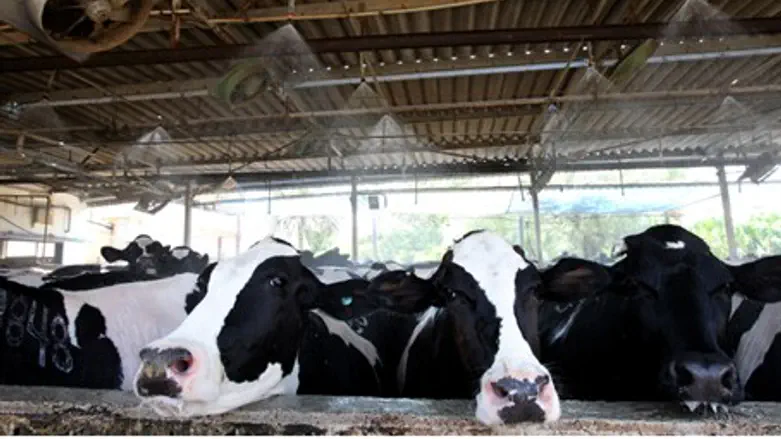
Consumers in Israel pay more for milk and milk products than do consumers in the EU and North America – as much as 40% more, depending on the country. But that extra money is not going to the farmers, a study by the Agriculture Ministry shows – because the cost of producing a liter of milk is almost the same in Israels as it is in the EU.
This, despite the fact that Israeli farmers pay almost twice as much as European farmers to feed their cows. In Europe, most cows graze on large fields of grass, but such fields are very limited in Israel – so farmers have to import feed to ensure that their cows are eating enough. Israeli production methods, however, are much more efficient than they are in most countries, so Israeli farmers make up for that extra expense with efficient production.
As a result, a liter of raw milk – sold by farmers to processors – costs the euro equivalent of NIS 2.02 in Europe on average, while Israeli processors pay NIS 2.11. Taking all the expenses into account, said Uri Tzuk-Bar, a researcher at the Ministry, “we were shocked to discover that, even considering the subsidies provided to many European dairy farmers, the costs of production in Europe were very similar to the cost of production here.”
The Ministry report did not discuss what happens to milk after it leaves the farmer – and why, for example, a liter of milk in Israel costs on average NIS 6.10, compared to NIS 4.08 in France, despite the similar costs of production. Officials said that part of the extra expense was due to the 18% value added tax on milk – basic food products are not VAT-exempt, as they are in many countries – as well as the cost of kashrut supervision, and the cartel-like behavior and lack of competition in the dairy business in Israel.